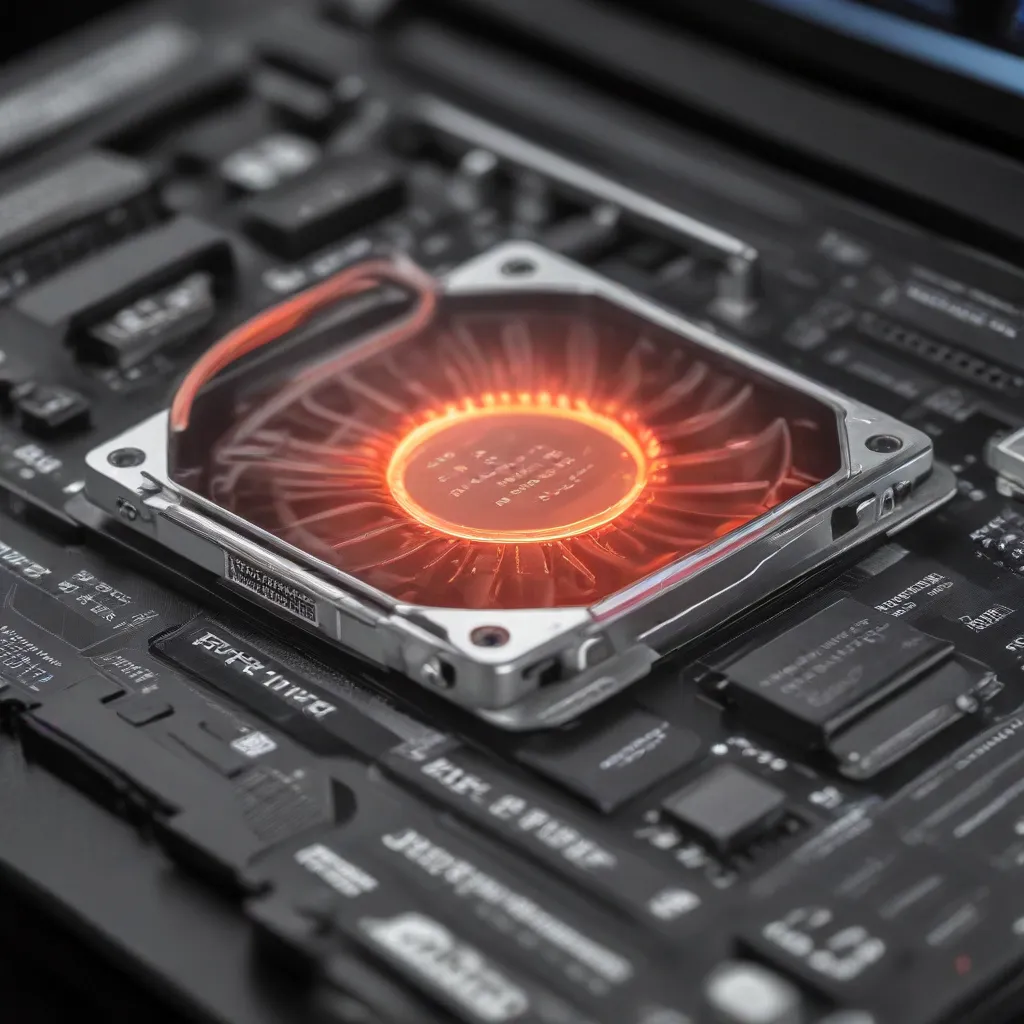
As an experienced IT professional, I’ve encountered numerous cases of laptop overheating and thermal throttling issues. These problems can significantly impact device performance, leading to frustrating slowdowns, crashes, and even permanent hardware damage if left unchecked. In this comprehensive guide, we’ll delve into the common causes, symptoms, and effective troubleshooting steps to help you diagnose and resolve these thermal-related challenges.
Understanding Laptop Overheating and Thermal Throttling
Laptop overheating occurs when the internal components, particularly the CPU and GPU, generate more heat than the cooling system can effectively dissipate. This can happen due to a variety of factors, including inadequate airflow, clogged vents, excessive dust buildup, or simply pushing the hardware too hard for the laptop’s design.
Thermal throttling is a built-in mechanism employed by modern processors to prevent overheating and subsequent damage. When the CPU or GPU reaches a critical temperature threshold, the system will automatically reduce their clock speeds and performance to generate less heat, effectively “throttling” the performance. While this safeguard helps protect the hardware, it can result in noticeable lags, stuttering, and degraded overall system responsiveness.
Diagnosing the Issue
The first step in resolving laptop overheating and thermal throttling is to properly diagnose the problem. Here are some key symptoms to look for:
Elevated Temperatures
Monitor your laptop’s internal temperatures using a reliable system monitoring tool, such as HWMonitor or Speccy. Observe the CPU and GPU temperatures, both at idle and under load. Temperatures consistently above 80°C (176°F) during normal usage or spiking above 90°C (194°F) during demanding tasks may indicate an overheating issue.
Performance Throttling
Pay attention to any noticeable performance degradation, such as slow application startup, frequent stuttering or freezing, or reduced frame rates in games. These can be signs that the system is thermally throttling to prevent overheating.
Unexpected Shutdowns or Reboots
If your laptop suddenly shuts down or reboots without warning, especially during heavy workloads, it’s likely a result of the system reaching critical temperature thresholds and automatically shutting down to prevent damage.
Inconsistent Fan Behavior
Listen for your laptop’s cooling fans and observe their behavior. If the fans seem to be running at inconsistent speeds or not spinning up when expected, it could indicate an issue with the thermal management system.
Addressing the Root Causes
Once you’ve identified the overheating or thermal throttling symptoms, it’s time to investigate and address the underlying causes. Here are some common troubleshooting steps:
Ensure Proper Airflow and Ventilation
Verify that your laptop’s vents and air intake/exhaust ports are not obstructed or clogged with dust and debris. Use a can of compressed air to gently clean the vents and fans, being careful not to force any debris deeper into the device.
If your laptop has adjustable fan speeds or a dedicated cooling mode, ensure that these settings are configured correctly. Some laptops may also have built-in software to manage cooling profiles, so check your manufacturer’s recommendations.
Check for Dust Buildup
Over time, dust and debris can accumulate inside your laptop, hampering the cooling system’s efficiency. Carefully disassemble your device (following the manufacturer’s instructions) and use a soft brush or compressed air to thoroughly clean the internal components, including the heatsinks, fans, and vents.
Ensure Proper Thermal Paste Application
The thermal paste (or thermal interface material) between the CPU/GPU and their respective heatsinks plays a crucial role in heat transfer. If the paste is old, dried out, or unevenly applied, it can lead to poor thermal conductivity and overheating issues. Consider having a professional reapply the thermal paste if you’re not comfortable doing it yourself.
Optimize Power and Thermal Management Settings
Many laptops come with pre-configured power and thermal management settings that may not be optimized for your specific usage patterns. Explore your device’s power options, thermal profiles, and any manufacturer-provided software to fine-tune these settings for better cooling performance.
Consider Upgrading Cooling Solutions
In some cases, the laptop’s stock cooling system may simply be inadequate for the hardware configuration. Upgrading to a more robust cooling solution, such as a laptop cooling pad or external fan, can significantly improve thermal management and prevent overheating.
Perform a Clean Install of the Operating System
If the above steps don’t resolve the issue, a clean reinstallation of the operating system (OS) can sometimes address underlying software conflicts or driver problems that may be contributing to the overheating problem. Ensure that you have the latest drivers and updates from the manufacturer before reinstalling the OS.
Preventing Future Overheating Issues
To maintain optimal laptop performance and avoid recurring overheating problems, consider the following preventive measures:
- Regularly clean the laptop’s vents, fans, and internal components to remove dust and debris.
- Avoid using the laptop on soft surfaces (like beds or cushions) that can block airflow.
- Limit intensive tasks or heavy workloads during prolonged periods of use to prevent the system from overheating.
- Consider using a laptop cooling pad or stand to improve airflow and heat dissipation.
- Keep the laptop in a well-ventilated area and avoid using it in direct sunlight or hot environments.
- Monitor the laptop’s temperature and performance using system monitoring tools, and address any issues promptly.
By following these diagnostic and troubleshooting steps, you can effectively identify and resolve laptop overheating and thermal throttling problems, ensuring your device operates at peak performance and reliability. For more IT tips and solutions, be sure to visit IT Fix regularly.












